By Mark Gomez, Social Studies Teacher at Manual Arts High School
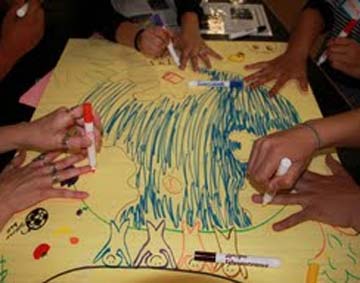
Attendees decorate t-shirts at a community forum held in the summer.
This is a David and Goliath story in which energized teachers, students and parents from Manual Arts High School decided to take matters into their own hands and disrupt the inadequate status quo of public education in South Central LA’s Local District 7.
Through Public School Choice 3.0, LAUSD requested proposals for Augustus Hawkins High School, a new campus that will relieve the overcrowded Manual Arts campus. Local District 7 submitted one generic proposal for multiple new schools to continue business as usual. A group of teachers, students, and parents wanted to create a school that is for the community by the community. Thus, the Schools for Community Action (SCA) were born.
Committed to bring fresh air to a historically stale educational environment, SCA has been tirelessly working to ensure the new Augustus Hawkins campus will be an innovative and effective public school for the families of South Central. Throughout the Spring and Summer, they organized numerous community meetings that brought students, local police officers, parents, business owners, social service workers, university affiliates and educators together to create the vision for this school.
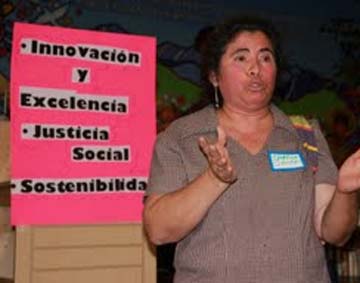
A woman speaks at a community forum held in the summer.
Based on the community input, it became clear that parents and students desire options and concrete college and career paths in their public schools. SCA has submitted four small school proposals for the overall site. Each of SCA’s four small schools plans have a focus – Community Health Advocates School (social work/therapy), Critical Design and Gaming School (game design, tech and media), Responsible Indigenous Social Entrepreneurship (local business/responsible consumerism) and School of Urban Sustainability and Environmental Science (urban planning, environmental engineering). In addition to campus wide community partners, each school has reached out to specific university programs to further support their instructional programs. USC School of Social Work, Loyola Marymount University, as well as UCLA School of Public Policy, are just a few of the programs committed to support SCA’s academic programs.
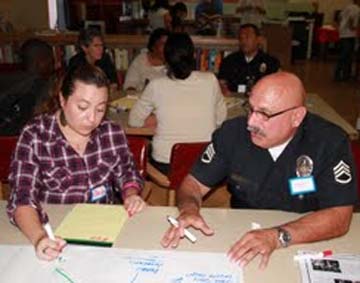
Attendees talk at a community forum held in the summer
Each small school is linked by SCA’s core values, which are: student centered, community collaboration, innovation and excellence, social justice and sustainability. SCA will also have an advisory program in all four schools that is designed to establish a true home base to support student attendance and address the individual needs that students bring to school every day. The SCA school plans are designed to support the whole student and welcomes parent and community support in all of the school programs.
If the Local District 7 plans are approved, students will continue to be limited to blocks of remedial math and English, with only the hope of possibly having the opportunity in their senior year to take courses that relate to a career. The SCA plans are designed to interest and support every student from 9th grade through 12th grade.
Supt. John Deasy is expected to give his decision next week regarding the future of Augustus Hawkins High School.
For more information, please see the SCA website http://schoolsforcommunityaction.org or contact Mark Gomez at 310-699-6342; [email protected]









 From the moment kids walk through the kindergarten doors their schools are pushing them to aim for college, and with good reason. Even in the slow recovery from the worst economic downturn since the Great Depression, unemployment for college graduates was 4.2 percent in January 2012 compared to 8.4 percent for high school graduates, according to the Bureau of Labor Statistics. And by 2018 as we become a more tech- and information-based economy, nearly two-thirds of jobs will require at least some college education, according to a 2010 report by Georgetown University’s Center on Education and the Workforce.
From the moment kids walk through the kindergarten doors their schools are pushing them to aim for college, and with good reason. Even in the slow recovery from the worst economic downturn since the Great Depression, unemployment for college graduates was 4.2 percent in January 2012 compared to 8.4 percent for high school graduates, according to the Bureau of Labor Statistics. And by 2018 as we become a more tech- and information-based economy, nearly two-thirds of jobs will require at least some college education, according to a 2010 report by Georgetown University’s Center on Education and the Workforce.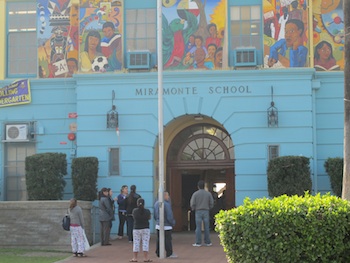 Parents congregate outside Miramonte Elementary school last week after meeting with school officials.
Parents congregate outside Miramonte Elementary school last week after meeting with school officials.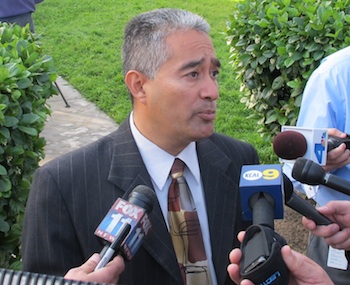 Miramonte Elementary principal Martín Sandoval talked to reporters the day after the arrest of teacher Mark Berndt.
Miramonte Elementary principal Martín Sandoval talked to reporters the day after the arrest of teacher Mark Berndt. LAUSD continues to break its promise to our community by closing adult education. Adult Ed. is one of the few places our students and community can have a second chance at receiving their high school diploma, make up a class they might have missed while in high school, improve their English skills, or simply to learn a new trade in industrial arts. Adult Ed. helps our economy by providing thousands of hard working adults and high school students with the skills they need to enter a new career.
LAUSD continues to break its promise to our community by closing adult education. Adult Ed. is one of the few places our students and community can have a second chance at receiving their high school diploma, make up a class they might have missed while in high school, improve their English skills, or simply to learn a new trade in industrial arts. Adult Ed. helps our economy by providing thousands of hard working adults and high school students with the skills they need to enter a new career.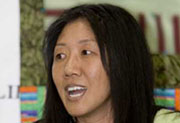 With over 720,000 students suspended or expelled from school within the last academic year for non-violent and non-drug related offenses, it is clear that schools and their punishment systems have a problem. This week is National Week of Action, a week that combines 13 cities at rallies across the nation to protest the negative discipline system in schools. Instead, these communities and organizations are calling for positive behavioral support in educational institutions, giving children a chance to escape negative and unfair punishment.
With over 720,000 students suspended or expelled from school within the last academic year for non-violent and non-drug related offenses, it is clear that schools and their punishment systems have a problem. This week is National Week of Action, a week that combines 13 cities at rallies across the nation to protest the negative discipline system in schools. Instead, these communities and organizations are calling for positive behavioral support in educational institutions, giving children a chance to escape negative and unfair punishment. John C. Fremont High School, located in South Los Angeles, recently underwent reconstruction, a process that allows the Los Angeles Unified School District to make teachers at low performing schools, evaluated by a consecutive high dropout rates and low standardized test scores, reapply for their jobs. Some Fremont High teachers, at the time, decided not to reapply for their jobs as a symbol of opposition to the school district.
John C. Fremont High School, located in South Los Angeles, recently underwent reconstruction, a process that allows the Los Angeles Unified School District to make teachers at low performing schools, evaluated by a consecutive high dropout rates and low standardized test scores, reapply for their jobs. Some Fremont High teachers, at the time, decided not to reapply for their jobs as a symbol of opposition to the school district. In a bright blue classroom on MacArthur Park’s busy 8th street, Maria Hernandez is ready to learn. She has found a seat in the front row. Her books are neatly gathered on her desk, and she listens intently to her teacher’s instructions. Her teacher, Mr. Jorge, writes a sentence on the board.
In a bright blue classroom on MacArthur Park’s busy 8th street, Maria Hernandez is ready to learn. She has found a seat in the front row. Her books are neatly gathered on her desk, and she listens intently to her teacher’s instructions. Her teacher, Mr. Jorge, writes a sentence on the board. Intersections South LA mentors work with students at Manual Arts High School to produce a student newspaper called The Toiler Times.
Intersections South LA mentors work with students at Manual Arts High School to produce a student newspaper called The Toiler Times.




